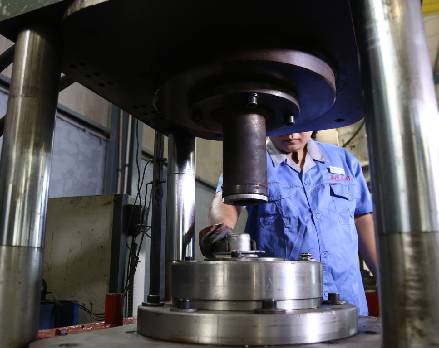 Afrikaans
Afrikaans  Albanian
Albanian  Amharic
Amharic  Arabic
Arabic  Armenian
Armenian  Azerbaijani
Azerbaijani  Basque
Basque  Belarusian
Belarusian  Bengali
Bengali  Bosnian
Bosnian  Bulgarian
Bulgarian  Catalan
Catalan  Cebuano
Cebuano  Corsican
Corsican  Croatian
Croatian  Czech
Czech  Danish
Danish  Dutch
Dutch  English
English  Esperanto
Esperanto  Estonian
Estonian  Finnish
Finnish  French
French  Frisian
Frisian  Galician
Galician  Georgian
Georgian  German
German  Greek
Greek  Gujarati
Gujarati  Haitian Creole
Haitian Creole  hausa
hausa  hawaiian
hawaiian  Hebrew
Hebrew  Hindi
Hindi  Miao
Miao  Hungarian
Hungarian  Icelandic
Icelandic  igbo
igbo  Indonesian
Indonesian  irish
irish  Italian
Italian  Japanese
Japanese  Javanese
Javanese  Kannada
Kannada  kazakh
kazakh  Khmer
Khmer  Rwandese
Rwandese  Korean
Korean  Kurdish
Kurdish  Kyrgyz
Kyrgyz  Lao
Lao  Latin
Latin  Latvian
Latvian  Lithuanian
Lithuanian  Luxembourgish
Luxembourgish  Macedonian
Macedonian  Malgashi
Malgashi  Malay
Malay  Malayalam
Malayalam  Maltese
Maltese  Maori
Maori  Marathi
Marathi  Mongolian
Mongolian  Myanmar
Myanmar  Nepali
Nepali  Norwegian
Norwegian  Norwegian
Norwegian  Occitan
Occitan  Pashto
Pashto  Persian
Persian  Polish
Polish  Portuguese
Portuguese  Punjabi
Punjabi  Romanian
Romanian  Russian
Russian  Samoan
Samoan  Scottish Gaelic
Scottish Gaelic  Serbian
Serbian  Sesotho
Sesotho  Shona
Shona  Sindhi
Sindhi  Sinhala
Sinhala  Slovak
Slovak  Slovenian
Slovenian  Somali
Somali  Spanish
Spanish  Sundanese
Sundanese  Swahili
Swahili  Swedish
Swedish  Tagalog
Tagalog  Tajik
Tajik  Tamil
Tamil  Tatar
Tatar  Telugu
Telugu  Thai
Thai  Turkish
Turkish  Turkmen
Turkmen  Ukrainian
Ukrainian  Urdu
Urdu  Uighur
Uighur  Uzbek
Uzbek  Vietnamese
Vietnamese  Welsh
Welsh  Bantu
Bantu  Yiddish
Yiddish  Yoruba
Yoruba  Zulu
Zulu conveyor pulley lagging types
Understanding Conveyor Pulley Lagging Types
Conveyor systems are integral to various industries, facilitating the transportation of materials efficiently. One critical component of these systems is the conveyor pulley, which plays a significant role in ensuring smooth operation and minimizing wear and tear. To enhance the performance of conveyor pulleys and protect them from damage caused by friction and environmental factors, lagging is applied. This article explores the different types of conveyor pulley lagging, their benefits, and applications.
What is Conveyor Pulley Lagging?
Pulley lagging is a protective layer applied to the surface of a conveyor pulley. Its primary function is to improve the grip between the pulley and the conveyor belt, reducing slippage and enhancing the transfer of motion. Additionally, lagging serves to protect the pulley from wear caused by the abrasive nature of materials being transported and adverse environmental conditions.
Types of Conveyor Pulley Lagging
1. Rubber Lagging
Rubber lagging is one of the most common types used due to its excellent frictional properties. It provides a high coefficient of friction, which helps prevent slippage between the pulley and the conveyor belt. Rubber is also resilient, allowing it to absorb shocks and vibrations, which significantly reduces wear on both the pulley and the belt.
Available in various thicknesses and shore hardness levels, rubber lagging can be tailored to specific applications, making it versatile for different industries. Its durability and resistance to wear make rubber lagging particularly suitable for harsh environments, such as mining and quarrying.
Ceramic lagging is another effective option designed for high-friction applications. It features ceramic tiles embedded in a rubber backing and offers superior wear resistance in high-load and high-abrasion scenarios. The primary advantage of ceramic lagging is its ability to provide maximum grip, significantly reducing slippage and contributing to increased conveyor efficiency.
This type of lagging is particularly beneficial in applications involving heavy materials or where belt slip can lead to substantial operational downtime. However, while ceramic lagging excels in durability and grip, it can be more costly than other types.
conveyor pulley lagging types

3. Polyurethane Lagging
Polyurethane lagging is known for its flexibility and water resistance, making it an ideal choice for wet environments. It offers a decent balance between friction and wear resistance and is often used in applications where rubber lagging might degrade due to moisture exposure or chemical interaction.
One of the benefits of polyurethane lagging is its lightweight nature compared to rubber and ceramic options, contributing to overall efficiency in transport systems. It’s also available in various colors and textures, allowing for aesthetic customization as per client specifications.
4. Spiral Lagging
Spiral lagging, distinguished by its unique design of interlocking spiral elements, is specifically used for applications requiring a strong grip. This type of lagging enhances the contact area between the pulley and the belt, which helps in achieving optimal traction and reducing slippage.
Spiral lagging is particularly advantageous in scenarios where material buildup might occur, as its design helps prevent trapped materials that could lead to slippage or wear on the belt.
Benefits of Conveyor Pulley Lagging
Employing appropriate lagging on conveyor pulleys offers several benefits
- Improved Traction Enhanced grip reduces the risk of slippage, ensuring efficient material transport. - Extended Pulley Life Protective layers minimize wear and tear on pulleys, leading to longer service life and reduced replacement costs. - Reduced Maintenance By protecting the pulley system, lagging can decrease the overall maintenance needs of the conveyor system, saving both time and resources. - Energy Efficiency Improved system efficiency often translates into lower energy consumption, directly impacting operational costs.
Conclusion
Conveyor pulley lagging is a critical aspect of maintaining conveyor system efficiency and longevity. With various types available, including rubber, ceramic, polyurethane, and spiral lagging, businesses can select the most suitable option based on their specific operational requirements. By investing in the right lagging, companies can enhance their productivity, reduce costs, and ensure the reliable operation of their conveyor systems in the long run.
-
Revolutionizing Conveyor Reliability with Advanced Rubber Lagging PulleysNewsJul.22,2025
-
Powering Precision and Durability with Expert Manufacturers of Conveyor ComponentsNewsJul.22,2025
-
Optimizing Conveyor Systems with Advanced Conveyor AccessoriesNewsJul.22,2025
-
Maximize Conveyor Efficiency with Quality Conveyor Idler PulleysNewsJul.22,2025
-
Future-Proof Your Conveyor System with High-Performance Polyurethane RollerNewsJul.22,2025
-
Driving Efficiency Forward with Quality Idlers and RollersNewsJul.22,2025





























